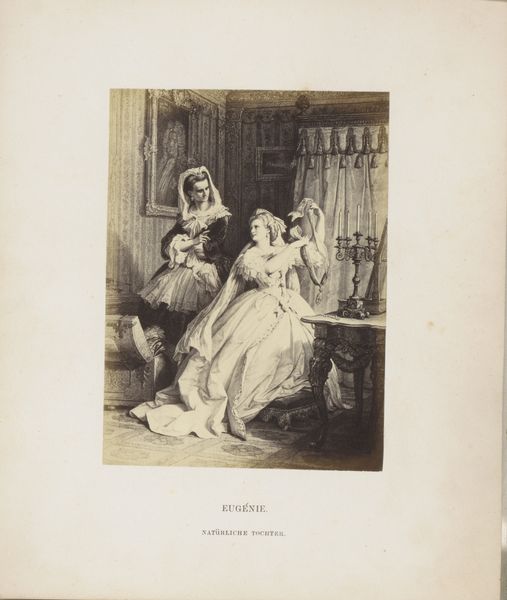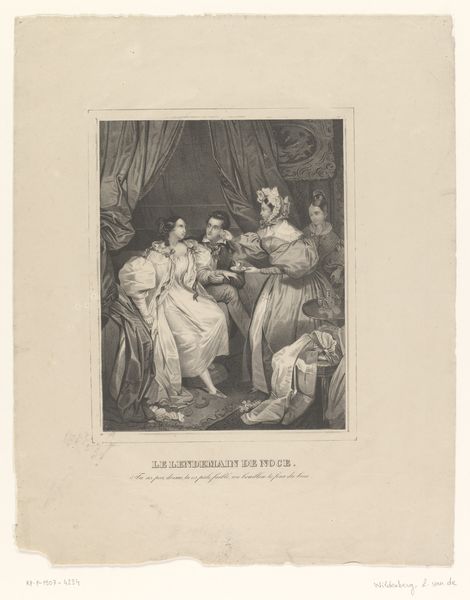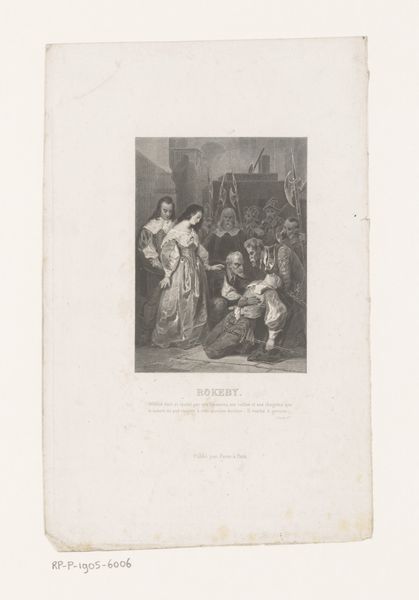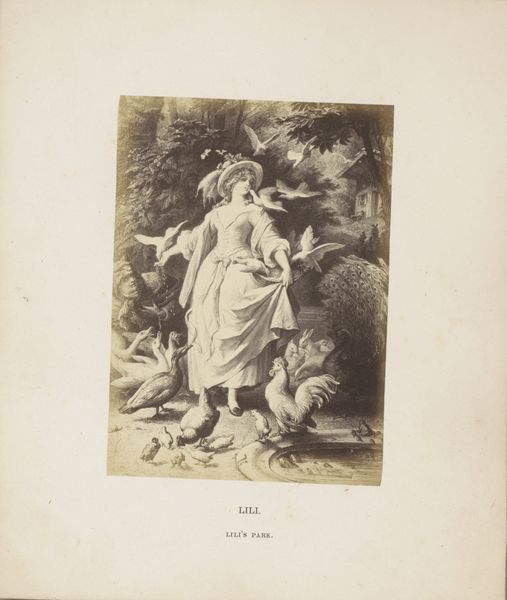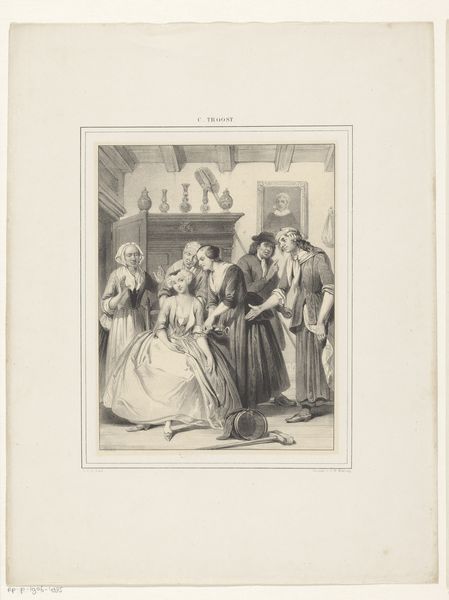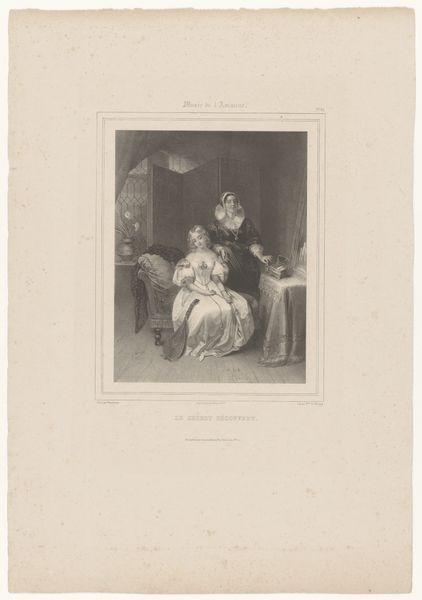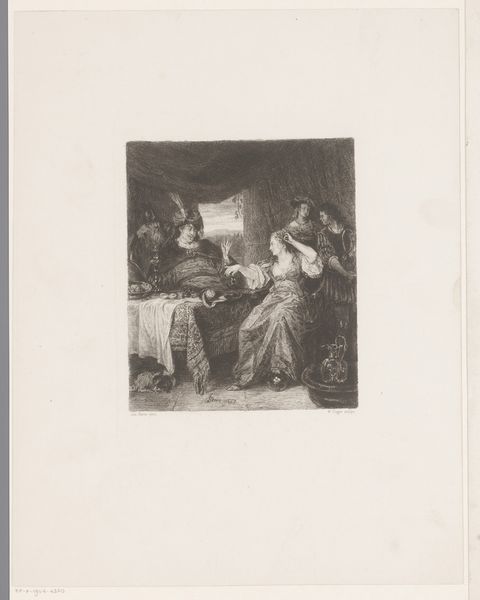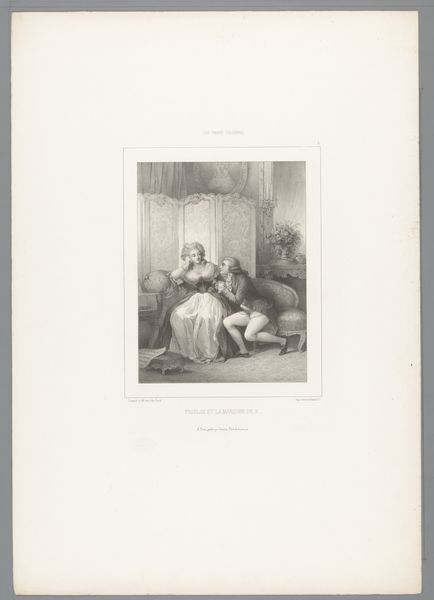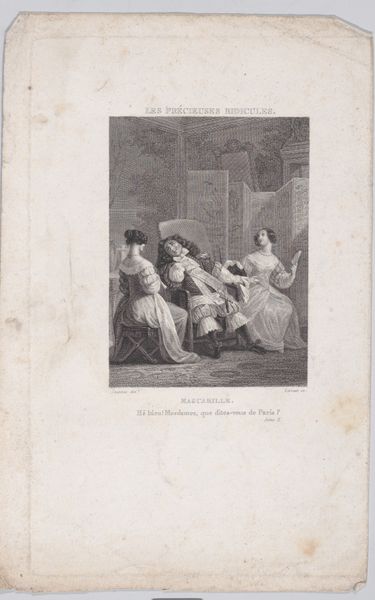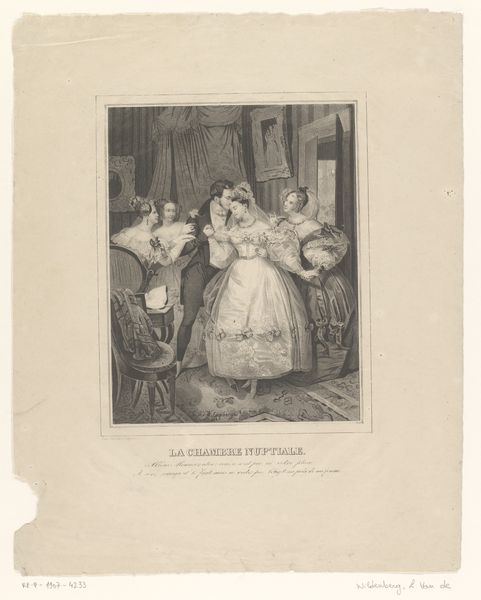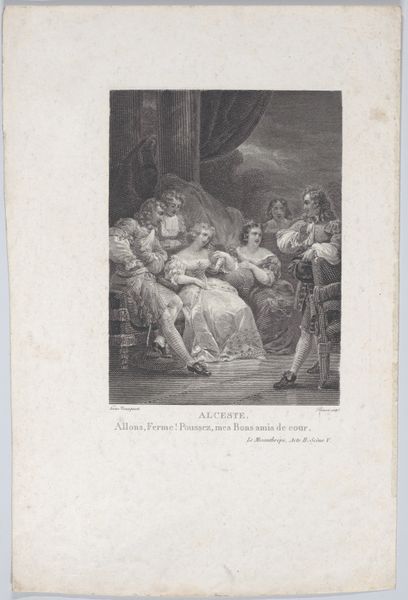
Fotoreproductie van een tekening van Lotte uit Goethe's Die Leiden des jungen Werthers door Wilhelm von Kaulbach 1850 - 1900
0:00
0:00
anonymous
Rijksmuseum
Dimensions: height 211 mm, width 178 mm, height 119 mm, width 93 mm
Copyright: Rijks Museum: Open Domain
Curator: Looking at this, I instantly think of a beautifully chaotic ballet. Editor: This is a photogravure, circa 1850-1900, of Wilhelm von Kaulbach's drawing "Fotoreproductie van een tekening van Lotte uit Goethe's Die Leiden des jungen Werthers," now residing here at the Rijksmuseum. It captures a moment with Lotte, from Goethe's "The Sorrows of Young Werther." Curator: Oh, Lotte! I see it. That melancholy sweetness...but there's so much life exploding around her. Is she being mobbed by adoring children? It’s a tender domestic scene, but those lines, the shading... they hint at an underlying current of…longing. Like Werther is somewhere, always just out of frame. Editor: Indeed. Notice the meticulous rendering; the engraving process allows for such fine detail. This was likely part of a larger publishing project, making art—and Romantic ideals—accessible to a wider audience. The materiality of the print itself speaks to a desire for replication, distribution, almost a democratisation of Werther’s intensely personal story. Curator: I feel the same. This image flutters in a similar way, from quiet to turbulent in a heartbeat. Lotte is the eye of the storm. You see the clear lines and controlled poses in Kaulbach’s art. Editor: Von Kaulbach has harnessed that sentimentality but within an industrially reproducible format. It makes me wonder, how much did that tension matter? Is it possible that it shaped reception and critique in complex ways? Curator: What a poignant perspective. It reminds me how love—or its echo—lingers, even in the most manufactured corners. You know, like how those mass-produced prints could find their way into quiet parlors, sparking a secret empathy. It suggests a way to find a little art and magic within that replication, somehow. Editor: Precisely. That’s an intriguing direction for your reflection; now that the production of the original piece from Kaulbach is brought back to view, it somehow speaks of the possibilities present and in times bygone.
Comments
No comments
Be the first to comment and join the conversation on the ultimate creative platform.
